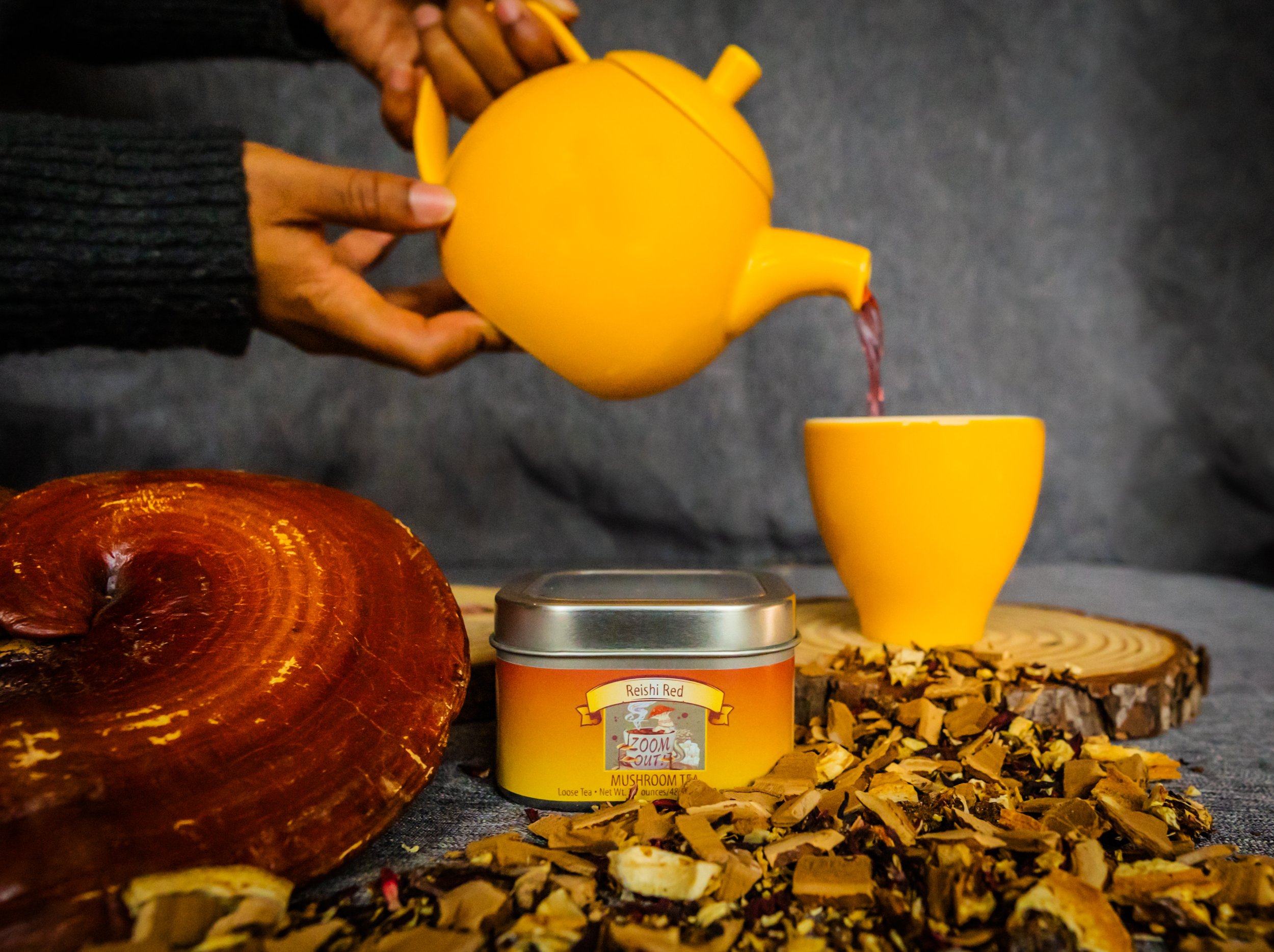The Top Health Benefits of ZOM Mushroom Tea: Reishi Red
Our Reishi Red mushroom tea blend is made primarily from reishi mushrooms (Ganoderma lucidum), and the flavor profile is complemented with dried lemon slices, hibiscus flower, and ginger. Reishi mushrooms have medicinal properties, and when combined with other healing ingredients, make for a powerful restorative tea. Reishi are classified as an adaptogen, which is a term for plants and mushrooms that aid the human body in maintaining homeostasis. Read on to learn more about how our Reishi Red mushroom tea blend can help you in your health journey. This article will focus on the benefits of the ingredients in the mushroom tea that have the most scientific evidence and study behind them.
Reishi mushrooms contain compounds that target inflammation. When ingested, the active ingredient in reishi, ganoderic acid, activates immune response cells (in particular, B cells and T lymphocytes). In turn, these cells produce cytokines, which are small proteins that signal for immune and inflammation responses in the body (Bhardwaj et al, 2014). The anti-inflammatory properties of ingesting reishi is why adding a mushroom tea to your diet is a good idea if you live in regions with smoke and wildfire pollution.
Lemons are naturally high in vitamin C, which is essential for a healthy and balanced diet. Vitamin C is especially recognized for its role in maintaining a healthy immune system, reducing the severity of allergic reactions, and helping to fight off infection. It is also an antioxidant, and used as a therapeutic treatment for several diseases and disorders.
The research is still scarce on the medicinal uses of hibiscus, but early results are showing that ingestion of the active ingredient, Hibiscus sabdariffa, specifically in tea form, can help with lowering blood pressure in pre- and mildly-hypertensive adults. While the biological mechanism is not yet understood, hibiscus tea can safely be used by anyone who wants to supplement their health.
Ginger has been known and used as an anti-inflammatory for centuries, but within the last few decades, peer-reviewed scientific support has come out in support of this. Specifically, ginger contains pharmacological properties very similar to that of non-steroidal anti-inflammatory drugs (NSAIDs). Both act to suppress prostaglandin synthesis. Prostaglandins are hormones that are produced at a site of injury or infection, and high levels of prostaglandins are associated with inflammatory symptoms like fever, redness, swelling, and pain. In chronic inflammatory conditions, excess prostaglandin production increases unwanted inflammation, causing pain and discomfort beyond the natural healing process. Ginger acts to suppress prostaglandin synthesis by inhibiting a key enzyme pathway.
It’s important to note that when brewing medicinal mushroom tea, the process is different than the average tea-drinker may be used to. To get the most out of our tea blends, be sure to steep your tea for a full 60 minutes. This period of time allows for the mushrooms to break down and increase the bioavailability of compounds for ingestion.
And last, but not least, here are a few words from founder Bashira Muhammad on the experience of brewing and drinking Reishi Red tea: Reishi Red is tangy from the lemon and fruity from the hibiscus. It’s my most consistent favorite tea (possibly from the demands of being a full-time student and business owner). Reishi Red is the pot of tea I make when I want/need to relax and get grounded. I drink this blend when I’m looking for sleep support. Despite Reishi’s stress relieving effects and relaxing properties, it is a great mushroom to counter fatigue. It promotes energy in the most opposite way of caffeinated energy. With that reduced fatigue I can be actively checking items off my to-do list.
Medicinal properties found within the Reishi Red tea blend according to each ingredient.
Sources
Cleveland Clinic, Adaptogens. https://my.clevelandclinic.org/health/drugs/22361-adaptogens
Bhardwaj et al, 2014. “Suppression of inflammatory and allergic responses by pharmacologically potent fungus Ganoderma lucidum.” Recent Patents on Inflammation & Allergy Drug Discovery. DOI: 10.2174/1872213x08666140619110657
Society for Endocrinology. Prostaglandins. https://www.yourhormones.info/hormones/prostaglandins/
Grzanna et al, 2005. “Ginger–An Herbal Medicinal Product with Broad Anti-Inflammatory Actions.” Journal of Medicinal Food. https://doi.org/10.1089/jmf.2005.8.125
Chambial et al, 2013. “Vitamin C in Disease Prevention and Cure: An Overview.” Indian Journal of Clinical Biochemistry. DOI: 10.1007/s12291-013-0375-3
McKay et al, 2009. “Hibiscus Sabdariffa L. Tea (Tisane) Lowers Blood Pressure in Prehypertensive and Mildly Hypertensive Adults.” The Journal of Nutrition. DOI:10.3945/jn.109.115097



